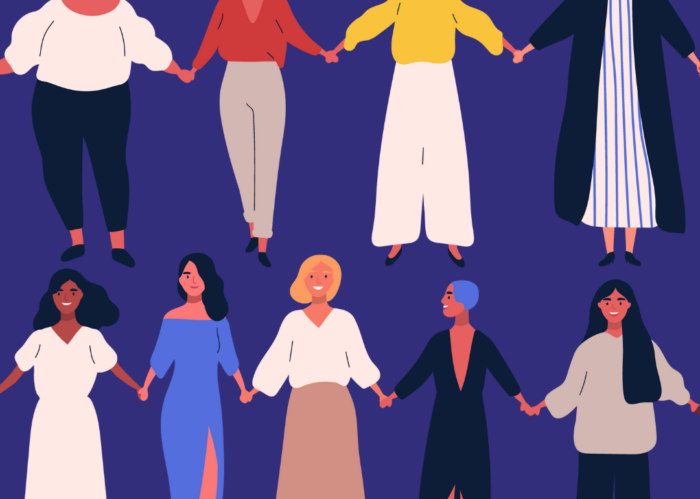Gina Frangello: On Writing A Life in Men
 Happy publication day to Gina Frangello for her new book, A Life in Men. In the novel, a young woman with a terminal disease goes back to Europe to discover what went wrong between her and her best friend when they traveled there together years ago. Audrey Niffenegger, the author of The Time Traveler’s Wife, says, “A Life in Men is a terrific book, a tender story of friendship, and a frank story of a young woman’s adventures with an assortment of oddly funny, violent, and quirky men. It’s intense and beautifully written.”
Happy publication day to Gina Frangello for her new book, A Life in Men. In the novel, a young woman with a terminal disease goes back to Europe to discover what went wrong between her and her best friend when they traveled there together years ago. Audrey Niffenegger, the author of The Time Traveler’s Wife, says, “A Life in Men is a terrific book, a tender story of friendship, and a frank story of a young woman’s adventures with an assortment of oddly funny, violent, and quirky men. It’s intense and beautifully written.”
Here, in her essay for The Algonquin Reader, Gina talks about life imitating art and how the book she wrote became her own guide to navigating grief.
A year ago, my lifelong friend and surrogate sister, Kathy, was found dead in her apartment by her fiancé. She had metastatic ovarian cancer, and we knew that her chances of ever reaching old age were slim. At the time of her death, however, she was almost finished with her first round of chemo and was on the verge of remission, which could have bought her healthy, symptom-free years. Then, while getting ready for work, she threw a blood clot—a side effect of cancer, which is a thrombotic disease—and died, hopefully instantly. We’d been friends since we were sixteen—since she cornered me in a bathroom at school and confessed her passionate, unrequited love for the guy who sat behind me in Physics. In the nearly thirty years that followed, I had remained her confidante—a kind of emotional big sister, although to describe it that way would be reductive. We were also partners in crime, sneaking flasks of Jameson into booze-free events, or wearing our leather pants to children’s birthday parties. She was also the first “nanny” my twin daughters ever had, and ten years later, the loss of her hit my three children almost as hard as it did me. She had visited me in every country I’d ever lived in, including several that appear in my new novel, A Life in Men. After her death, there was not a bar, a restaurant, a bookstore, a vintage clothing shop, a nail salon, or even a European city I seemed able to enter without her ghost accompanying me. We had been everywhere together. We had lived a sprawling, messy, intertwined life, and now I was set with the task of navigating this ghost town alone.
Kathy was not the inspiration for the character Mary. The novel sold, in fact, just weeks before her shocking cancer diagnosis. Prior to that she had no symptoms of illness, and I had never known her to be sick. In fact, I was the one always being hospitalized for one thing or another, and before she met her fiancé, she often joked that she would marry my husband when I kicked the bucket.
Tragedy is hard—maybe impossible—to define. Kathy was forty-three at the time of her death. She had traveled the world, had many friends, had worked and lived independently for years, and was madly in love. Surely her death was premature, and devastating to those who loved her. To call it “tragic” might be a stretch in light of so many who, like Mary in A Life in Men, live daily with the reality of terminal illnesses, or who, like Mary’s best friend, Nix, meet chilling fates born of human violence. Still, like Mary and Nix in the novel, I have found myself quite literally haunted by the ab- sent presence of my friend, speaking aloud to Kathy on empty streets late at night, trying to figure out what it means to be, as Faulkner wrote, “one of those who is doomed to live,” with all the privileges and burdens it entails to carry the dead with us, to live for ourselves as well as them.
When I was twenty years old, I arrived in London for a semester abroad only weeks after the Lockerbie disaster of 1988. Many of my new friends in London had lost friends in the plane explosion, but it had not touched me directly. I did, however, find myself living that semester with a beautiful, whip-smart, fearless woman named Sarah who read Updike and worshipped the band Miracle Legion. We traveled together; we picked up guys together; we swapped our sometimes-boyfriends’ ripped jeans. Sarah had cystic fibrosis. The man she fell in love with in London, in fact, called her “Cystic” as a pet name, which I found so irreverently tender that it may be the only direct detail about Sarah to have survived in the pages of my novel. After our semester ended, we didn’t keep in close touch, but some five years later I saw her again in Boston. Her health had deteriorated, but she had continued to travel, as had I. Five years after that reunion, Sarah died, at age thirty, while living in Jordan among the Bedouin people. She had been pursuing a degree in cultural anthropology. Considering that I had seen Sarah only once in the past decade, her death hit me perhaps bizarrely hard. I am a hard sell about admiring people, but I had admired the hell out of her. She was, in the least cheesy possible application of the word, inspirational. She lived large and hard, often against the counsel of doctors and friends. She never let her illness define or confine her. She also loved as hard and recklessly as she had lived. In a fit of nostalgia and sadness, I wrote to Sarah’s mother, whom I did not even know, and asked if I might write her biography. I never heard back from her, which does not, in retrospect, surprise me. Likely this grieving woman had never even heard of me. Sarah’s story was not mine to tell.
 It would be ten years before I would begin A Life in Men—a fictional novel centered around a woman traveler with cystic fibrosis. I purposely gave Mary an unusual genetic mutation of the disease, because I did not want this to be a novel about CF, a condition I don’t personally have, so much as about what it is to struggle to live on a large canvas despite physical—and psychological—limitations. The countries Mary travels to are not based on Sarah’s life but my own; in all cases except for Gander, Newfoundland, the book became autobiographical when it comes to geography, and in other, more unexpected, ways, too. I wrote the novel to honor Sarah’s memory, but in many senses the more I wrote, the more anything based on her receded from its pages. By the time it sold to Algonquin, it had become the most deeply personal work of fiction I’ve ever written.
It would be ten years before I would begin A Life in Men—a fictional novel centered around a woman traveler with cystic fibrosis. I purposely gave Mary an unusual genetic mutation of the disease, because I did not want this to be a novel about CF, a condition I don’t personally have, so much as about what it is to struggle to live on a large canvas despite physical—and psychological—limitations. The countries Mary travels to are not based on Sarah’s life but my own; in all cases except for Gander, Newfoundland, the book became autobiographical when it comes to geography, and in other, more unexpected, ways, too. I wrote the novel to honor Sarah’s memory, but in many senses the more I wrote, the more anything based on her receded from its pages. By the time it sold to Algonquin, it had become the most deeply personal work of fiction I’ve ever written.
It would be fair to say then that losing my own best high school girlfriend five months after selling the book was one of those instances of Life Imitating Art—in this case, in a most unwelcome way. In the months leading up to the novel’s publication, I have found myself walking in Mary’s shoes, trying to relearn life without Kathy much as Mary has to without Nix. Who are we without the audience, company, and conspiracy of our closest friends? What do we want to do with the time we have left, however long that may be? What do those who are gone continue to teach us?
A Life in Men was inspired by one courageous woman, whose life was ultimately very separate from my own. And yet ironically, after my own childhood friend’s death, the book became my inspiration and template for how to go on from there, as I found myself living its pages in ways I had never expected. As I had once learned things about bravery from Sarah, so my own novel has strangely instructed me in the ways of grief and memory as I mourn Kathy. The book is dedicated to two very different women, both of whom taught me difficult, sometimes frightening, and ultimately freeing things about how to live.
Click here for more about A Life in Men.
-
Overall Score
Reader Rating: 0 Votes



